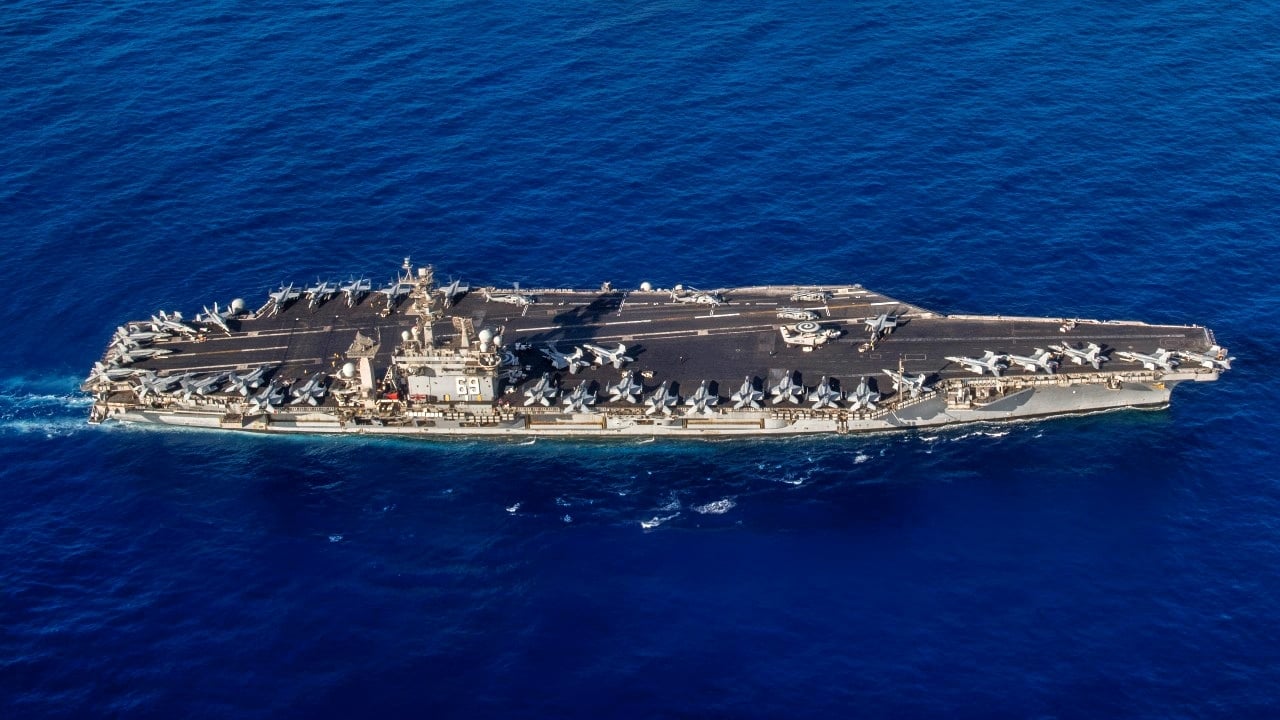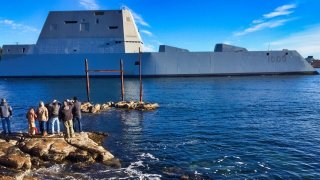Decoding A Naval Fleet: A Simplified Guide to Ship Types
So a young acquaintance asks what kinds of ships there are in a navy. That’s kind of a basic question. You would think it lends itself to a pithy answer intelligible to nonspecialists. You would be wrong.
So a young acquaintance asks what kinds of ships there are in a navy. That’s kind of a basic question. You would think it lends itself to a pithy answer intelligible to nonspecialists.
You would be wrong.
And that’s troublesome. Physicist Richard Feynman, a personal hero, maintained that if you can’t explain something to a sixth grader, you either don’t know the material well enough yourself or you have a problem communicating concepts. Ideas are not that complex. You need to deepen your knowledge, refine your teaching, or both. That’s sage counsel from a Nobel laureate. Let’s heed it.
Or try to.
The obvious way to approach queries about fleet design is by resorting to listmania. In other words, you could run through the litany of ship types found in naval inventories, from hulking aircraft carriers down to tugboats.
Do that and watch your questioner’s eyes glaze over.
There are many ship types, and distinctions between them can be obscure. For example, try explaining the difference between a U.S. Navy guided-missile cruiser and destroyer in a hurry. A cruiser is bigger than a destroyer, right? Well, not necessarily. The latest variant of the venerable Arleigh Burke-class destroyer displaces about as much as the Ticonderoga-class cruisers now leaving service. Burkes and Ticonderogas sport variants of the same combat system, known as Aegis—a combination radar, computer, and fire-control system. And they carry the same types of armaments, albeit cruisers feature substantially more vertical-launch missile siloes and thus more firepower than destroyers.
To further blur the distinction between ship types, the three Zumwalt-class stealth destroyers now being repurposed as surface strike platforms actually outweigh cruisers, and by a hefty margin. And they will pack hypersonic missiles whereas cruisers do not.
Etc. Distinguishing between surface combatants is far from straightforward. Feynman frowns.
Anyone trying to explain fleet design to nonspecialists runs afoul of such intricacies. Meeting the Feynman standard is hard. So rather than try to list all the ship types constituting a fleet, why not classify fighting ships by function? Simplifying is more promising. During the age of sail, in fact, it was downright easy. Ships of war were assigned to “rates” corresponding to the complement of guns they bore. Firepower determined their place in fleet operations. Naval historian extraordinaire Julian Corbett broke down wooden-walled fleets into three broad categories:
-Capital ships. These brawny combatants boasted the armament to mete out heavy gunfire barrages. They also had the defensive staying power—chiefly rugged hull construction—to absorb punishment while dueling rival capital ships. Capital ships constituted the navy’s battle fleet. They were big, specialized, and expensive. For that reason even the most lavishly appointed navy could only afford these apex predators in limited numbers.
-Cruisers. These were relatively inexpensive, less well-armed warships that nonetheless mounted sufficient gun power to police the sea lanes once the battle fleet had either vanquished the enemy fleet or blockaded it in port. Cruisers outgunned whatever remained of the hostile navy, letting them dominate less contested seas. Best of all, they were affordable in bulk. As a result the cruiser contingent had geographic reach that capital ships could never match given their small numbers. Cruisers could fan out, asserting control at many places on the nautical chart.
-Flotilla. This was a swarm of still smaller, more lightly armed, cheaper vessels that discharged the administrative duties all navies must discharge—chiefly in near-shore waters.
Corbett’s taxonomy of fighting ships remains a valuable point of departure for thinking through what various ship types are and do. But the neat lines separating those segments are indistinct nowadays. Even in Corbett’s day—over a century ago—he bewailed the revolution in seaborne weaponry that had overtaken naval warfare. It accompanied the changeover from wooden hulls and sail to steel hulls and steam and diesel propulsion. Even rudimentary submarines and surface patrol craft could now deploy heavy-hitting weapons such as sea mines and torpedoes. They could do heavy damage to cruisers and capital ships. No longer were small combatants an afterthought in naval warfare, as they had been for centuries when they were radically outgunned. This was now a battleworthy contingent.
A superempowered flotilla upended the Corbettian scheme of things—compelling battle fleets to take elaborate precautions to defend themselves when they ventured within reach of subs, torpedo craft, and minelayers. The new flotilla turned naval commanders’ world upside down, and Corbett’s with it. No longer was the age of sail—the chief source of historical data and insight into war at sea—a trustworthy guide to fleet design.

All of that being said, the fundamental naval functions endure. Some segment of a navy denies a foe access to important seaways if unable to defeat it outright. Sea denial is a quintessential flotilla action. Another fights for maritime command when the balance of forces favors it. There’s your battle function. A third exercises command once it’s in hand and the worst threats are at bay. Deny, win, and exploit control. There are your three basic ship types. Many types of hulls make up each contingent.
How would Corbett rate the U.S. Navy as a fighting force? I think he would find fault with it owing to imbalances in fleet design. It yaws overwhelmingly toward the battle fleet at the expense of other worthwhile endeavors such as sea denial. This is an artifact of navy culture. The U.S. Navy has grown accustomed to commanding the sea since 1945, as though command is a birthright. The service sees itself as being perpetually on offense. Thinking in terms of sea denial—by definition a strategy of the weaker pugilist—does not come easy to American naval chieftains.
Accordingly, the flotilla is a backwater in U.S. fleet design. About the only surface combatant that fits neatly into the flotilla category is the littoral combat ship, a vessel designed to operate in coastal waters under reduced threat. And the leadership has soured on the littoral combat ship, retiring youthful hulls at the same time shipyards complete the last few. If American commanders opt for sea denial, accordingly, they will be forced to harness heavier ships such as destroyers and submarines rather than purpose-built flotilla craft. This could change as technology matures. It will be reasonable to classify uncrewed surface and subsurface vessels as part of the flotilla as they join the fleet.
The result would be a hybrid, more balanced fleet. Gee-whiz technology could be salvation in the Western Pacific, where America is unlikely to be the stronger contender on day one of a conflict.
The capital-ship contingent predominates within the U.S. Navy—again, a force constructed with offense rather than defense in mind. Aircraft carriers, cruisers, and destroyers boast that combination of offensive and defensive power needed to fight peer navies for command of the sea. Supporting the battle fleet is a combat logistics fleet made up of tankers, stores ships, and the like. Supply vessels don’t fit ideally into any of the three functions, but they are an indispensable enabler for everything the navy does. No navy prospers without regular supplies of fuel, ammunition, and stores of all kinds. That’s why no carrier or surface action group is complete unless accompanied by one or more of these workhorses.
And exploiting command? The cruiser contingent is no longer made up of cruisers in Corbett’s sense of light combatants fielded in large numbers to control the sea. Frigates and corvettes are the modern counterparts to his cruisers. The U.S. Navy is attempting to add a new frigate to the fleet, known as the Constellation class. A frigate is a lighter combatant than a cruiser or destroyer, with more modest sensors and weapons. It should be adequate for policing the sea against remnants of the hostile navy. But with only twenty Constellation-class hulls on the navy’s wish list, and with the program plagued by construction delays, it’s foreordained that capital ships will pull double duty once they have won maritime command.
Corbett was right: capital ships are too expensive to fit out in large numbers, and the U.S. Navy is top-heavy with them. It will not have enough ships in the inventory to control all vital sea lanes by itself, and to otherwise exploit the blessings of maritime command. It must fill in the force structure with low-cost craft—chiefly unmanned, one supposes—while seeking help from fellow U.S. armed services and allies.
Faster, please.
It's worth noting that Julian Corbett could have added a fourth naval function to the list. Indeed, he should have. He was a full-throated advocate of expeditionary operations, meaning operations that that navies execute to shape events on land, whether by landing troops, projecting force inland from the sea by means of fire support, or some other means. The U.S. Navy’s amphibious fleet—a fleet of transports used to deposit U.S. Marines on foreign shores—constitutes the core of the American naval expeditionary force.
Once the capital-ship fleet has wrested control of sea, sky, and coastal zones from an antagonist, it’s safe enough for amphibious groups to move in close enough to do their work. Some “amphibs” or “gators” bear a strong resemblance to aircraft carriers, featuring long, flat flight decks populated by helicopters and sometimes fixed-wing combat aircraft. Think Top Gun: Maverick. And in fact these “big-deck” amphibious warships are similar in proportion to frontline World War II flattops. Other amphibs look like humble transports. Many such vessels can ballast down, taking on seawater in order to partly submerge. Ballasting down allows landing craft to launch from bays in their sterns or return to the ship.


